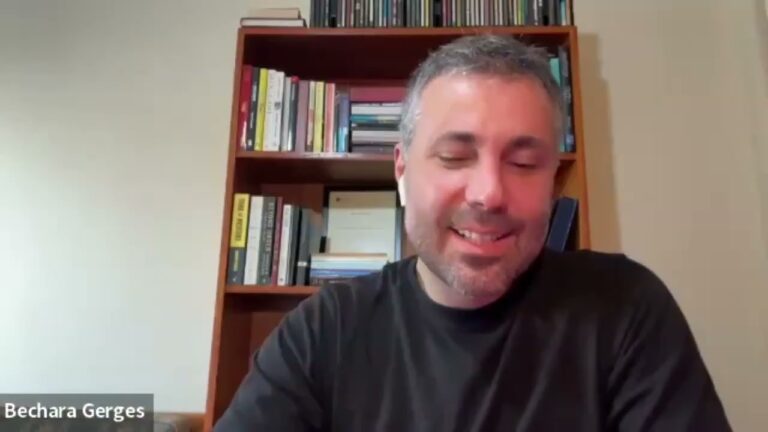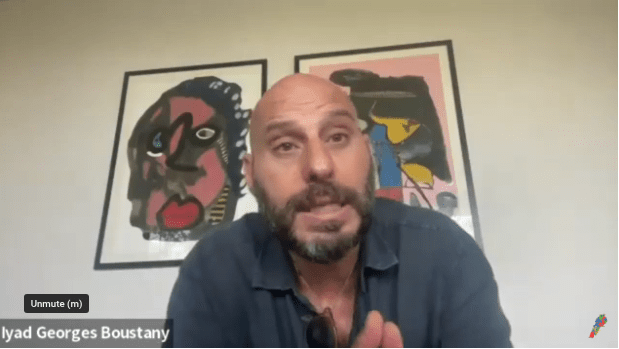Video Summary:
The provided text examines Lebanon’s constitutional history, particularly its struggles with diversity and governance, stemming from the “Eastern Question” where European and Ottoman influences clashed. It argues that Lebanon’s periods of instability directly correlate with centralized, unitary political systems that failed to acknowledge its multinational and multi-confessional social fabric. Conversely, eras of peace and development, like the period between 1861 and 1915, thrived under ethnogeographic federalism that allowed for a degree of communal self-governance. The source advocates for a new bottom-up federal project that recognizes “sect as identity, not religion,” enabling local communities to self-govern based on shared cultural heritage, with higher-level governance providing essential services and ensuring shared development and solidarity across diverse groups.
Video Transcript:
The Eastern question and the future of Lebanon the Great Eastern question is a conflictual situation stretching from the Caucasus down to Egypt at the cultural Frontier where European Christianity meets ottoman Islam the conflicts ultimately got settled in one of two ways transfer of population or in Partition to resolve the problem of Lebanon not in Partition nor in displacement of populations is the essence of the federal project drafted by Yad George wtin following the collapse of the ancient regime princehood in 1842 Lebanon adopted its first constitutional regime between 1843 and 1860 the constitution of Mount Lebanon was based on Geographic federalism called it divided Mount Lebanon into a northern region and a southern region each governed by a sect but each having serious enclaved minorities within it a childish marble game in summer 1859 triggered a chain of events which ended in the 1860 bloodbath in 1961 a new constitution was adopted it is a form of ethnogeographic federalism that was also called it was extremely successful until it was rescinded by the Ottoman Empire in 1915 the proverbial peace and development under this governance model was summed up with one sentence after World War I greater Lebanon adopted in 1926 a new constitution a centralized ized and unitary political system that negated Lebanese diverse ethnic social fabric the Unitarian and centralized nature of the regime went from crisis to crisis from the 1937 history book Clash to the 1943 ludicrous quid pro quo not Arab not European which then led to the 1958 Civil War followed by the infamous 1969 Cairo agreements and then the 1975 to 1990 Lebanese Civil War we were told the war ended and the Constitutional reforms and amendments finally gave each his fair share the thaif Accords kept the 1926 model centralized and Unitarian shifted power from 1 milit to another this only add insult to injury as the worst was yet to come the 1990 to 2024 so-called peace time proved even more disastrous than the various Wars as further environmental social social and economic wealth was destroyed than during the violent episodes from this quick overview of lebanon’s three constitutional experiences since the end of the principality one can depict two eras of instability and one of peace and development indeed problems arise each time the political boundaries the legal system failed to espouse the social fabric of the concerned constituencies given the above one understands that any Constitution must be based on certain accepted principles the recognition of the social fabric as reality Lebanon a multinational country Lebanon is a multinational country the various populations adhere to different National narratives the community is the encapsulation of the individual and Collective identity hence sect is identity not religion nor Faith Lebanese carry a dual identity an organic identity represented by their ethnocultural and historical Heritage namely Sunni Shia Druze and Christians sect being identity not faith and a contractual identity Lebanese the recognition of the imperative of self-government Cuius regio, eius religio as in Europe the application of govern and Governor have to be of the same faith is a Cornerstone for secularism accountability and development enabling each Community to freely choose its own leaders and its governance system is the recipe for peace stability and development the recognition of a superior governance model Subsidiarity and scaling bottomup power Devolution is the basis of governance each municipality will be asked to choose its belonging a municipality can decide of almost everything it can do alone and scale when it cannot municipalities shall decide how how and when to combine their resources and scale up in promoting public good they can scale up horizontally or vertically horizontal scaling up is performed between municipalities irrespective of their belonging and is mainly concerning hard infrastructure Water Treatment Plant sewage system power plant vertical scale up is essentially between the same canl municipalities for universities museums printing of history books religious Affairs promoting religious tourism policey the recognition of the imperative of shared development solidarity development of one municipality must have a spillover effect to drag along surrounding municipalities as much as possible the structure Municipal canal and federal are three preset governance levels each Lebanese will benefit from three kinds of affiliation or belonging the Lebanese ID card the cantel citizenship card the municipal residency card each card coming with its specific set of Rights and obligations any Lebanese can freely elect his principal residency in any municipality irrespective of their citizenship and where one elects his principal residents one pays his taxes and votes to elect the municipal Council all the citizens of a given canton irrespective of their Municipal residency will vote to elect members of cantel parliament and the prime minister of the canton the elected canton MPs will join to to form the federal Parliament the for elected prime minister will form federal government also called presidential Council the presidential Council will be formed by the four governors of the four cantons for a period of four years and each of the governors will become president for one year and all Decisions by the presidential Council will be taken by unanimous vote the federal powers are essentially money printing defense and foreign policy the recognition of the imperative of checks and balances Direct democra direct democracy communities can approve or rejection of decisions in Municipal canal and federal referendums as monu said laws should be like clothes they should be made to measure to fit the people they serve as we can see the new proposed governance system is bottom up with each Lebanese residing where he wishes and electing the municipal Council irrespective of his identity and citizenship at the same time each Lebanese irrespective of of his place of residency elects directly or indirectly the representatives in his executive legislative and Judiciary bodies these then are part of the federal government



